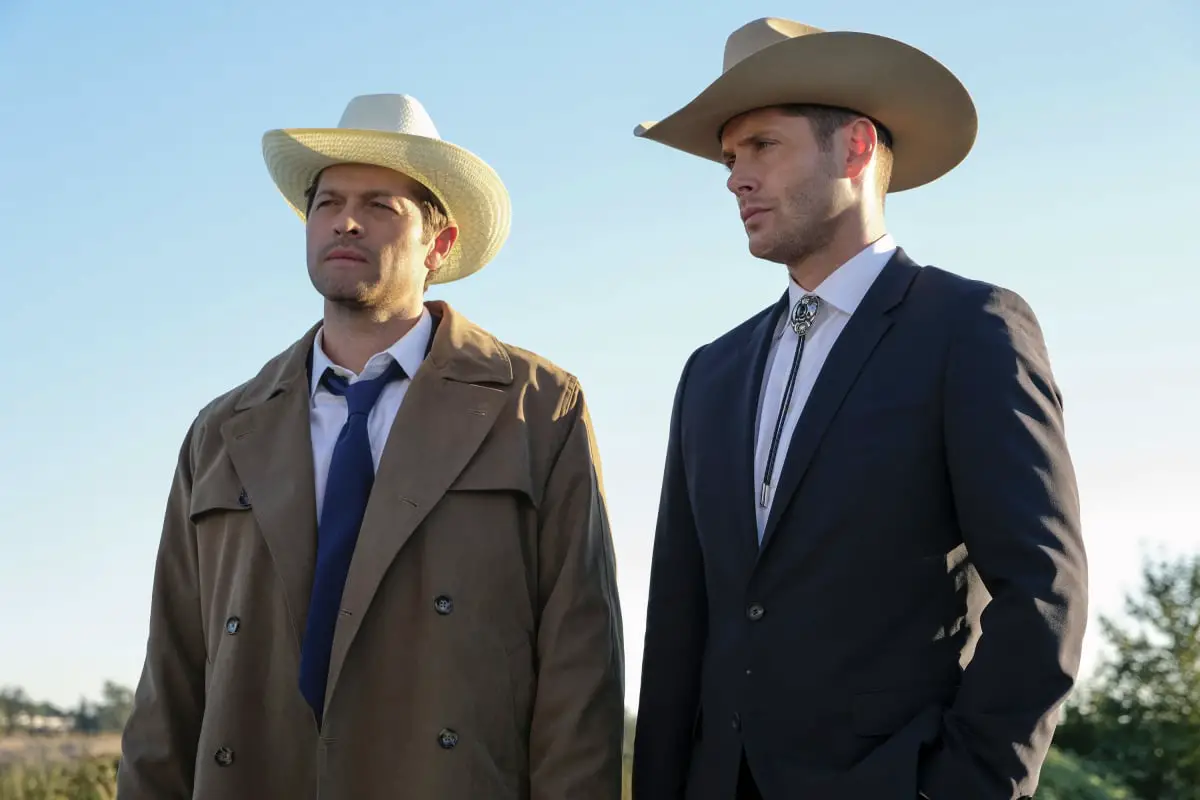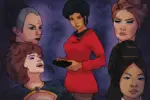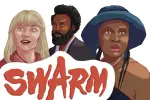Fandoms are a natural part of appreciating media in the present day, and they are as easy to find as logging onto “stan” Twitter or the fandom side of Tumblr. These fan communities come together to share their love for a show, movie, book or even a band or celebrity.
However, as popular as fandoms have become since the early 2010s, these dedicated fanbases go as far back as the 1960s with shows like “Star Trek.” These fans, dubbed “Trekkies,” were essentially crusaders of what we know today as fandom, and a large percentage of this passionate fanbase consisted of women. These women opened the door for fandoms and shipping.
Shipping is when a specific section of the fanbase advocates for a romantic relationship (a “ship”) in the work that may or may not be canon. Some of the most vocal shippers endorse non-canon ships. These pairings can sometimes be a result of chemistry between actors, ambiguous writing or premeditated slow-burn writing.
These non-canon ships give way to another tier of astronomically popular shipping, which are pairings that involve men-loving-men (MLM) relationships.
The “Trekkies” were big advocates of shipping MLM relationships. These fans would create amorous scenarios to put Spock and Kirk into, usually through writing fan fiction or making fan art. It didn’t matter how the original material portrayed the two characters’ bond, the fandom would take the potential they saw and reinvent their story into one of peak romance.
This heralded a wave of shippers who wholeheartedly supported the possibility of these romantic relationships between men in countless media works.
However, while choosing to ship two men showed progressive thinking, it also uncovered some deep-rooted issues that accumulated over the years.
Over time, female shippers were criticized for continuously picking specific male relationships to ship to the umpteenth degree.
Examples include the “Supernatural” fandom, which involves Dean Winchester and Castiel, or their ship name Destiel, a human and angel pairing that shippers would swear was the epitome of romance. “Teen Wolf” has Stiles Stilinski and Derek Hale, or Sterek, which is a human and werewolf pairing that’s had great chemistry and exciting tug-of-war relationship possibilities. Even “Harry Potter” has Harry and Draco Malfoy, or Drarry, two young wizards that could be a great example of enemies-to-friends-to-lovers.
Unfortunately, these ships, often done by female shippers, fall into the same mold that’s faced criticism before.
The critiques stem from the repetitiveness of the ships; the two men, who do not canonically express romantic feelings for each other, are usually white, straight-passing and attractive. Moreover, these ships often disregard other types of LGBTQ+ representation.
It is a pattern seen in many fandoms and has aroused a stigma against the mostly straight, female shippers. Is their preference for men-loving-men ships simply a coincidental show of support, or is it an unconscious desire to fetishize conventionally attractive men in “sinful” relationships, all for their own selfish entertainment?
It should be noted that representation for LGBTQ+ characters and relationships is still too few and far between. In 2019, only 10.2% of characters on broadcast TV were identified as LGBTQ+. In consideration of this, criticizing any support for LGBTQ+ relationships could be considered more detrimental than addressing glaring concerns within fandom spaces.
However, does that mean that real-life members of the LGBTQ+ community should not speak up against this type of exploitation, even if it is considered much less visibly harmful than other, more blatant actions?
What does this say, as a whole, about how fandoms feel about MLM relationships over other forms of representation?
Issues With Race
Around the release of “Star Wars: The Force Awakens” in 2015, there was the immediate obsession with an MLM relationship in the “Star Wars” fandom. And no, it is not the Finn and Poe Dameron ship, FinnPoe, that most assumed it would be.
Instead, Archive of Our Own (Ao3), a fan fiction-sharing website, saw an increase in fiction written about Kylo Ren and Hux Armitage. This pairing involving the villain and his barely present lackey was a prominent ship on the site for many years before Kylo and Rey’s pairing took the top spot around 2018. Even with Reylo sitting on top, Kylux still remains ahead of FinnPoe by more than 3,300 fan fiction stories.
This is a troubling assessment to make, that a pairing containing two white men is more likely to garner dedication than an interracial couple featuring a Black man and a Latino man. It is especially disheartening considering that FinnPoe received so much more attention in the franchise.
CNN reported an increase in the representation of LGBTQ+ people of color (POC) on broadcast TV in 2019. While this indicates a step in the right direction, it does not mean that fandom spaces do not still show prejudice in what they choose to devote themselves to.
Straight-Passing or Stereotypes?
Arguably, every prior character that has been mentioned in this article could be considered “straight-passing” in all the most conventional ways. Most, if not all the characters named above, have shown no concrete indication of being attracted to men or possessing any other sexuality other than straight.
However, this classification feels disingenuous. This whole assessment is derived from stereotypes of what a non-straight man is “supposed” to look like.
In reality, it is not that simple. Especially when certain works dangle the possibility of a non-straight character or relationship in front of the audience without ever officially committing to seeing the relationship come through.
This is called “queerbaiting” and it is a hated tactic used to gratify fandoms that idolize certain characters and relationships.
Nevertheless, just because this is a murkier topic does not mean that the preference for straight-passing men is not an issue. Only wanting a specific kind of attractive and masculine man for ships can still reveal a prejudice against more effeminate non-straight men.
Absence of WLW and Other Forms of LGBTQ+ Representation
Overall, this is the most damaging aspect of the predilection for MLM ships over other LGBTQ+ relationships.
In 2019, the Archives of Our Own Top 20 pairings list with the most new fanfics featured 18 MLM ships and zero WLW ships. Out of the Top 100 overall pairings in 2019, only three WLW ships made it to the list. Moreover, there was zero transgender, nonbinary or gender-fluid presence.
While Archives of Our Own is not the end-all-be-all of what is represented in fandom, it does paint a well enough picture about where fanbases are at when it comes to their preferences. The sad truth of the matter is fandom still doesn’t care enough for representation that does not fit its own selfish needs.
Progress still has a long way to go for most of these LGBTQ+ figures and characters. Hopefully, fandom will learn to appreciate more diversity, instead of fixating on its “ideal” fantasy.
















